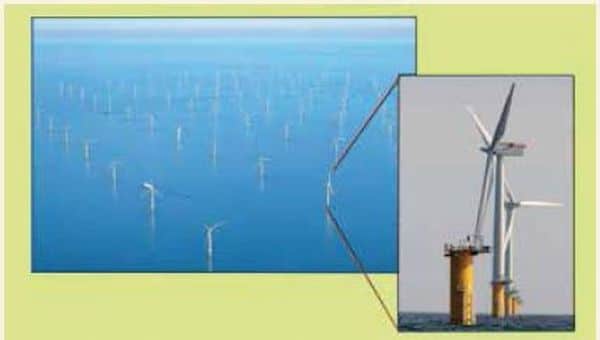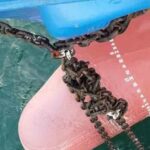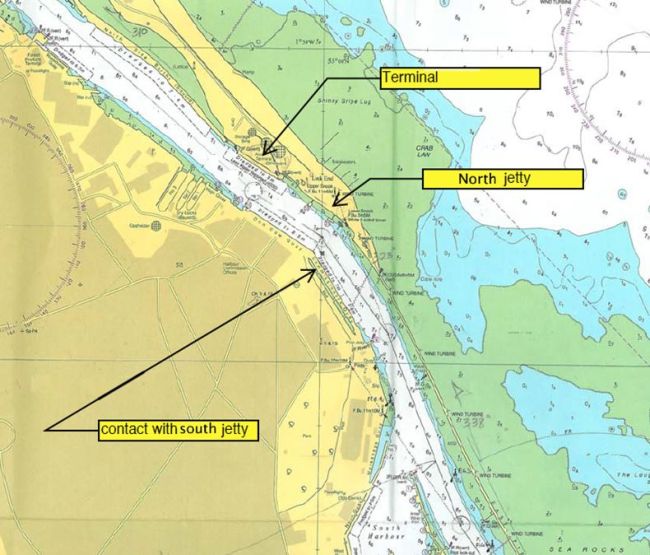Real Life Accident: Wind Farm Vessel Collides With Turbine Tower
The captain of a wind farm service vessel was navigating within the wind farm as the weather worsened, with winds gusting to 40 knots, driving rain and heavy seas and swell. The captain, as was the practice once ‘inside’ the wind farm, had put the radar into standby mode.
Trials have demonstrated that, at close range, a wind farm may produce multiple reflected and side lobe echoes that can mask real targets. Employing radar within a wind farm is not reliable; therefore, the decision by the captain not to employ the radar while transiting the wind farm was understandable.
Although the chart plotter, with all the turbine towers clearly indicated, was operating on an appropriate scale, the captain chose not to use the system to monitor the vessel’s position. Given that the safety lights of the turbines were functioning, and his familiarity with navigating in the wind farm at night, he was confident in his ability to maintain situational awareness by eye alone.

However, as he attempted to navigate through the wind farm by visual means, the vessel struck a turbine tower at approximately 12 knots. The collision resulted in minor injuries to some of the crew and considerable damage to the vessel.
The investigation revealed that passage plans had not been completed for any part of the journey. Additionally, the captain was navigating visually and relied on the safety lights located on the wind turbine towers for his situational awareness. However, in this instance, the tower which the service vessel struck was not illuminated.
Lessons learned
- The captain was relying solely on the turbine safety lights and didn’t make good use of the lookout and navigation equipment on board.
- There was no formal assessment of new Masters, allowing the possibility of ingrained poor working practices being passed on and perpetuated.
- Poor seamanship was evident by failing to keep a proper lookout using all available means appropriate in the prevailing circumstances. Many investigations commonly highlight an OOW having relied too heavily on navigation equipment and not ‘looking out of the window’. In this case, the opposite was true as insufficient use was made of the navigation equipment available.
Reference: nautinst
Do you have info to share with us ? Suggest a correction
- Real Life Incident: Vessel Collision in Good Visibility
- Real Life Incident: Severe Injury To Deck Crew While Leaving Berth
- Real Life Incident: Departure Damage in Very Restricted Waterway
- Real Life Incident: Low Situational Awareness Has High Impact Consequence
- Real Life Incident: Fouled Anchor in a Designated Anchorage
- Real Life Incident: Fire On Barge Carrying Scrap Metal Causes $7 Million Worth Of Damage
Latest Case studies Articles You Would Like:
Subscribe To Our Newsletters
By subscribing, you agree to our Privacy Policy and may receive occasional deal communications; you can unsubscribe anytime.















